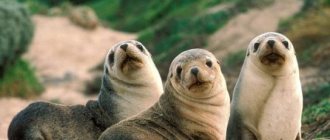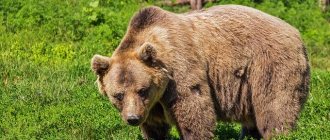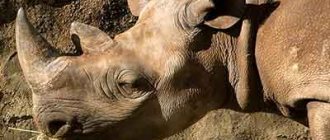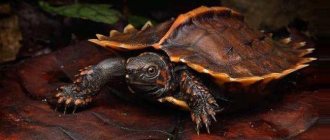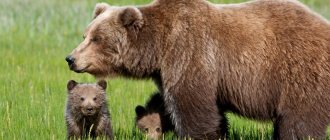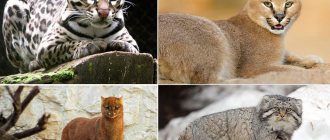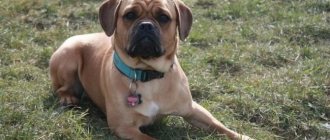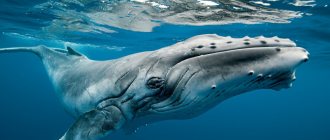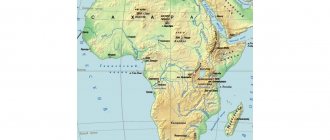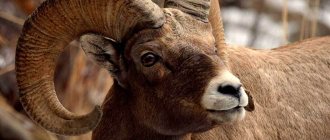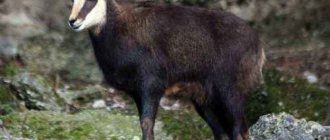A mammal that obtains nutrients from plants by fermenting them with microbes in a specialized stomach before digestion.
Stylized illustration of the digestive system of ruminants
Play media
Impalas swallow and then regurgitate food - this behavior is known as "chewing the cud"
Ruminants
The animals are herbivorous mammals that are capable of obtaining nutrients from plant foods by fermenting them in a specialized stomach before digestion, mainly through microbial action.
The process, which occurs at the front of the digestive system and is therefore called foregut fermentation, usually requires regurgitation and repeated chewing of fermented food (known as cud). The process of chewing gum to further break down plant matter and stimulate digestion is called mastication
.
[1] [2] The word "ruminant" comes from the Latin ruminare
, meaning "to chew again".
About 200 species of living ruminants include domestic and wild animals. [3] Ruminant mammals include cattle, all domestic and wild cows, goats, sheep, giraffes, deer, gazelles, and antelopes. [4] It has also been suggested that the Neimungs also relied on rumination, unlike other Atlantogenates who rely on the more typical hindgut fermentation, although this is not entirely certain. [5]
Taxonomically, the suborder Ruminantia is a lineage of herbivorous artiodactyls that includes the world's most advanced and widespread ungulates. [6] The term "ruminants" is not a synonym for Ruminantia. The suborder Ruminantia contains many species of ruminants, but does not include tylopods. [4] The suborder Ruminantia contains six distinct families: Tragulidae, Giraffidae, Antilocapridae, Moschidae, Cervidae and Bovidae. [3]
Description[edit]
Classification and taxonomy[edit]
Hofmann and Stewart divided ruminants into three main categories based on their forage type and feeding habits: concentrate selectors, intermediate types and grass/roughage eaters, with the assumption that ruminant feeding habits cause morphological differences in their digestive systems, including salivary glands. scar size and scar papillae. [7] [8] However, Woodall found that there was little correlation between the fiber content of ruminant diets and morphological characteristics, meaning that Hofmann and Stewart's categorical division of ruminants requires further investigation. [9]
Additionally, some mammals are pseudorumints, which have a stomach with three compartments instead of four like ruminants. Hippopotamuses (including hippopotamuses) are well-known examples. Pseudoruminants, like traditional ruminants, are foregut fermenters and most chew or chew the cud. However, their anatomy and mode of digestion differ significantly from those of the four-chambered ruminant. [4]
Single-chambered herbivores, such as rhinoceroses, horses and rabbits, are not ruminants because they have a simple single-chambered stomach. These hindgut fermenters digest cellulose in an enlarged cecum. In the small hindgut fermenters of the order Lagomorpha (rabbits, hares and pikas), cecotropes produced in the cecum pass through the colon and are then reintroduced to provide another opportunity for nutrient absorption.
Various shapes of the stomach in mammals. A
, dog;
B
,
Mus decumanus
;
C
-
Mus musculus
;
D
, weasel;
E
- diagram of the stomach of a ruminant animal, an arrow with a dotted line shows the progress of food intake;
F
, human stomach.
a - small curvature; b - greater curvature; c, cardiac end of G
, camel;
H
,
Echidna aculeata
.
Cma - greater curvature; Cmi, minor curvature. I
,
Bradypus tridactylus
Du, duodenum;
MB, intestinal diverticulum; **, outgrowths of the duodenum; †, mesh; ††, scar. A (in E and G), abomasum; Ca - cardiac compartment; Oh, the hymnal; E, esophagus; P, gatekeeper; R (right in E and left in G), scar; R (left in E and right in G), mesh; Sc, cardiac compartment; Sp, pyloric region; WZ, water elements. (from Wiedersheim's comparative anatomy
)
Digestion of food in the simple stomach of non-ruminant and ruminant animals [10]
Giraffidae
Giraffe
The giraffe family (Giraffidae) consists of two living species: the giraffe (Giraffa camelopardalis) and the okapi (Okapia johnstoni). Giraffes live in sub-Saharan Africa. Their favorite habitats are wooded African savannas and open forests. Giraffes are the tallest land animals on our planet. They can reach a height of about 6 m.
The giraffe is a herbivore that feeds mainly on leaves. Because of its height and long dark tongue, the giraffe collects leaves from the treetops. This ruminant animal is capable of digesting up to 65 kg of food per day. Giraffes especially love acacia leaves.
Acacia leaves contain a lot of moisture, which helps the giraffe not drink water for a long time. This helps the animal survive. When a giraffe bends down to drink, it has a hard time keeping track of approaching predators!
Okapi
Okapi are native to the tropical forests of the DRC in Central Africa. This animal was not discovered by scientists until 1900. The okapi has a height at the withers of up to 1.7 m, legs with black and white stripes, a dark brown body, large ears and a long tail. The stripes on the okapi's legs help the animal blend in with the rainforest.
Like the giraffe, the okapi has a long, dark tongue, which it uses to touch leaves and shoots of trees or bushes. The animal's height allows it to gather food from the ground (and not just from the tops of trees, like the giraffe). The okapi's diet also includes grasses, ferns, mushrooms and fruits.
Abundance, proliferation and domestication[edit]
Wild ruminants number at least 75 million [16] and are found on every continent except Antarctica. [3] About 90% of all species live in Eurasia and Africa. [16] The species inhabit a wide range of climates (tropical to arctic) and habitats (open plains to forests). [16]
The domestic ruminant population exceeds 3.5 billion, with cattle, sheep and goats making up about 95% of the total population. Goats were domesticated in the Middle East around
8000 BC Most other species were domesticated by 2500 BC. either in the Middle East or South Asia. [16]
Physiology of ruminants[edit]
Ruminant animals have various physiological characteristics that allow them to survive in nature. One of the characteristics of ruminants is their constantly growing teeth. During grazing, silica content in feed causes tooth wear. This wear and tear is compensated for by the constant growth of teeth throughout the life of ruminants, unlike humans or other non-ruminant animals whose teeth stop growing after a certain age. Most ruminants do not have upper incisors; instead, they have a thick dental lining to thoroughly chew plant foods. [17]Another feature of ruminants is the large capacity of the rumen, which gives them the ability to quickly consume food and complete the chewing process later. This is called mastication, which consists of regurgitating food, chewing again, salivating again, and swallowing again. Rumination reduces particle size, which enhances microbial function and allows the digestive tract to pass through the digestive tract more easily. [eleven]
Where does a cow's cud come from?
Cows, grabbing food, swallow it, almost without chewing. Then, between meals, it is regurgitated into the oral cavity, chewed thoroughly and swallowed again. Then the food ends up in a mesh, where it is formed into small balls that are easy to chew. ...
Interesting materials:
Why is water running from the boiler? Why does the biscuit rise and then fall? Why did the biscuit first rise and then fall? Why the marriage of Ivan 3 with Sophia? Why are British cats so angry? Why does broccoli start to bloom? Why was Prohibition introduced in the USA? Why was there an evacuation in Mega? Why does honey crystallize quickly? Why do roses bloom quickly?
Rumen microbiology[edit]
Further information: Methanogens in the digestive tract of ruminants
Vertebrates do not have the ability to hydrolyze the beta[1–4]glycosidic linkage of plant cellulose due to the absence of the enzyme cellulase. Thus, ruminants must depend entirely on the microbial flora present in the rumen or hindgut to digest cellulose. Digestion of food in the rumen is primarily carried out by the rumen microflora, which contains dense populations of several species of bacteria, protozoa, and sometimes yeast and other fungi—1 ml of rumen is estimated to contain 10–50 billion bacteria and 1 million protozoa. , as well as several yeasts and fungi. [18]
Because the environment within the rumen is anaerobic, most of these microbial species are obligate or facultative anaerobes that can degrade complex plant material such as cellulose, hemicellulose, starch, and proteins. Hydrolysis of cellulose produces sugar, which is then fermented to acetate, lactate, propionate, butyrate, carbon dioxide and methane.
Because bacteria ferment in the rumen, they consume about 10% of the carbon, 60% of the phosphorus, and 80% of the nitrogen that the ruminant ingests. [19] To restore these nutrients, the ruminant then digests bacteria in the abomasum. The enzyme lysozyme is adapted to facilitate the digestion of bacteria in the abomasum of ruminants. [20] Pancreatic ribonuclease also degrades bacterial RNA in the small intestine of ruminants as a source of nitrogen. [21]
While grazing, ruminants produce large amounts of saliva—it is estimated that a cow produces 100 to 150 liters of saliva per day. [22] The role of saliva is to provide sufficient fluid for rumen fermentation and to act as a buffering agent. [23] Rumen fermentation produces large amounts of organic acids, so maintaining the appropriate pH of rumen fluids is critical to rumen fermentation. After passing through the digestive tract through the rumen, the omasum absorbs excess liquid so that the digestive enzymes and acid in the rennet do not dissolve. [24]
Ecology DIRECTORY
Ruminants feed on fiber, which they can only digest with the help of bacteria.[...]
For ruminants, lagomorphs, many species of rodents and herbivorous insects, intestinal symbionts are of utmost importance in the processing of roughage. Typical symbiotic relationships are observed in leguminous plants with nodule bacteria that fix nitrogen from the air.[...]
The goat is a ruminant animal. She has a four-chamber stomach, including a scar, a mesh, a book, and abomasum. [...]
The stomach of ruminant animals (such as deer, lambing and antelope) consists of four compartments, and ingested food first enters one of them, called the reticulum. The first chewing leads to the grinding of food into particles with a volume of 1-1000 μl, and some of them can reach a length of 10 cm. Only particles with a volume of no more than 5 μl can pass from the mesh to the next section of the stomach, the book; larger animals regurgitate and chew again (the process of continuous “chewing the cud”). The rumen is populated by numerous bacteria (1010-1011 in 1 ml) and protozoa (105-106 in 1 ml); The pH of the environment in it is regulated by the animal due to the secretion of a secretion containing 100-140 mM bicarbonate and 10-50 mM phosphate by the salivary glands. Thus, the continuous influx of substrates and control of the conditions for its fermentation by microorganisms is provided by the host himself, and the products of microbial fermentation are the main source of nutrition for him (Fig. 13.4).[...]
When administered parenterally to ruminants, the metabolism of this pesticide does not differ significantly from the changes it undergoes in the body of other animal species. LDbo DNOC for sheep when ingested through the mouth is 200 mg/kg, for goats - 100 mg/kg. [...]
When administered parenterally to ruminants, the metabolism of this pesticide does not differ significantly from the changes it undergoes in the body of other animal species. LDbo DNOC for sheep when ingested through the mouth is 200 mg/kg, for goats - 100 mg/kg. [...]
Book blockage is a disease of ruminants, characterized by the occurrence of obstruction of the book as a result of overfilling of its cavity with food mass. [...]
With such a fate, it’s not bad to be a ruminant. In the morning chill, I grabbed some grass or something else and went to shelter. Lie down and chew what you ate in a hurry.[...]
The mutualistic nature of the relationship between ruminants and the rumen microflora is obvious: the microbes receive a constant source of food and fairly stable conditions, and the animal receives digestible substances from the feed, which cannot be processed using its own enzymes. [...]
The book is a section of the multichamber stomach of ruminants, the iron-free mucous membrane of which has the appearance of folded leaves (“books”). Located between the mesh and the abomasum.[...]
| Metabolization of parathion in the body of ruminants. |
Fenuron has a gonadotropic effect on ruminants; This explains the fact that intoxication of animals with this drug is accompanied by abortions.[...]
The order of artiodactyls is divided into the suborders ruminants (Ruminantia), non-ruminants (Ruminantia) and calloseds (Tylopoda). The ruminant suborder includes the families of bovids (Cavicornia, or Bovidae) and cladocerans, or oleores (Cervicorriia); and the first includes the subfamilies of cattle in the broad sense of the word, or bovine (Bovinae), and sheep-goats (Caprovinae).[...]
The collection is devoted to the physiology and biochemistry of protein nutrition of ruminant animals of various productivity and age. Modern concepts for assessing feed protein and rationing nitrogenous substances for animals are outlined. The effect of diets with different levels of digestible protein on the productivity and metabolism of cows is shown. The principles of a new protein nutrition system for highly productive cows are presented.[...]
Bacteria play a less prominent role in the gut of termites than in the rumen of ruminants, but they appear to be involved in two special cases of mutualism.[...]
Among mammals, fiber processing is especially specialized in ruminant ungulates, whose stomach has a complex structure (Fig. 13.2). Its most voluminous section, the rumen, serves as a container in which ingested food is mixed with saliva and exposed to enzymes of symbiotic bacteria and protozoa. The products of bacteriological fermentation of fiber (mainly volatile fatty acids - acetic, succinic, butyric) are absorbed here, in the rumen. The remaining part of the plant mass after secondary chewing is exposed to gastric juice in another part of the stomach - abomasum - and then follows the usual route through the intestines, successively processed by various enzymes. With this type of nutrition, along with plant matter, a large number of bacteria and protozoa enter the intestines, the cells of which serve as a source of protein nutrition; in addition, some bacteria in the rumen are capable of synthesizing protein from ammonium salts and urea.[...]
The transformation of fiber by microbes in the complex stomach of ruminants was studied in great detail (Hungate, 1963). This system provides an environment with a continuous supply of nutrients at a high level. Activities can be characterized using a parameter such as speed, if we assume that they are constant. Using this principle, Hungate and his collaborators determined which organisms were involved in the transformation of fiber and determined the end products and energy balance of the entire system. Because this system is anaerobic, it is inefficient for bacterial growth (only 10% of the energy is assimilated by bacteria), but it is precisely because of this inefficiency that ruminants can survive on a substrate such as fiber at all. The bulk of the energy obtained as a result of microbial activity is stored in fatty acids, which are formed from fiber, but do not decompose further. Ruminants can directly assimilate these end products. So the term "efficiency" can be quite misleading. In this example, anaerobic metabolism is inefficient for bacteria, but highly efficient for ruminants.[...]
The transformation of parathion occurs in a completely different way when it is introduced into the body of ruminants. The pesticide, along with the feed, first enters the rumen, where the microflora creates conditions conducive to restoration processes. As a result, what occurs first is not the oxidation of parathion into paraoxon, but the reduction of the molecule at the position of the r-nitrophenyl group. As a result, aminoparathion is formed, which is characterized by significantly lower toxicity compared to parathion. Subsequently, this substance is also hydrolyzed and excreted from the body through natural excretory organs (Fig. 50). [...]
In deeper layers of soil and sediment (as well as in the body of large animals, such as the rumen of ruminants, where anaerobic conditions exist), the CO2 content increases, and oxygen becomes the limiting factor for aerobes. The role of humans in the CO2 cycle was discussed in Chap. 4.[ …]
In order to digest plant food, herbivores need to chew it thoroughly (ruminants), and birds grind it in their muscular stomach. Carnivores don’t need to chew anything at all, since the meat of the prey contains all the components they need for life, ready for digestion, so the food can be swallowed whole.[...]
While lead enters the human body through the food chain from plant foods through the liver and kidneys of ruminants, mercury mainly accumulates in the bodies of fish and shellfish and also in the liver and kidneys of mammals. During the 1970s, when mercury-containing preparations were widely used in seed dressings, accidents were reported when handling treated seed material. Mercury enters the body primarily as methyl-containing compounds (see Equation 3.19). The accepted annual dose for an adult is 18 mg of mercury or 10 mg of methylmercury; the actual dose in Germany is about 5.7 mg per year.[...]
In order for tree greens to be better absorbed by animals, they must be chopped. In uncrushed form, ruminants are fed green leaves, small leafy branches (up to 6 mm in diameter), fresh bark of young trees, although it is better to grind them too. [...]
It is known that microbiological processes occurring in the intestines of farm animals (especially ruminants) play a huge role in digestion. The content of microorganisms in the digestive canal is very high (1 g of bacteria or rumen contents can contain up to 1 billion different bacteria), their composition is diverse. All these organisms, in the process of vital activity, form and secrete various substances into the intestines that can be beneficial or toxic to the animal. [...]
Atony of the rumen (forestomach) is a disease characterized by weakened contractions of the rumen and other parts of the stomach of ruminants. [...]
Energy nutritional value of feed. Energy is t[...]
That part of the drug that is absorbed by the tissues of the animal decomposes, apparently, as a result of hydrolysis to pyruvic, acetic acids and CO2. In the rumen of ruminants, dalapon is not exposed to microflora.[...]
Artiodactyls have well-developed third and fourth fingers, transformed into hooves, which bear the entire body weight. These are giraffes, deer, cows, goats, sheep. Many of them are ruminants and have a complex stomach. [...]
It was along the path of strengthening symbioses that many original life forms evolved before they became single living organisms. For example, microorganisms that inhabit the digestive tract of ruminants are not part of the cow's body at all. But only they are capable of forming fatty acids from the fiber eaten by the cow, which the cow can assimilate. Cows cannot digest fiber directly, and therefore they will die of starvation if their digestive tract is sterilized, even if there is an abundance of herbs around. Bacteria, in turn, in the cow’s digestive tract are provided with a stable environment with a constant temperature. [...]
Rumen microorganisms constantly multiply and at the same time reduce their numbers as its contents pass into the intestines. Further digestion of food, including some microbes, occurs in the intestines due to the ruminant’s own enzymes. The main products of digestion in the rumen are volatile fatty acids (acetic, propionic, butyric), ammonia, carbon dioxide and methane. Fatty acids are absorbed and serve as the main source of carbon nutrition for the ruminant. Propionic acid is especially important, the only one that can be converted by these animals into carbohydrates and is indispensable for their metabolism, especially during lactation.[...]
In the USA and other foreign countries, a special grade of urea containing 42% N is used for feed purposes. However, practice has shown that it is possible to use urea containing 45-46% nitrogen. In France, urea (44% U) is produced, which is supplied in microgranules, specially processed to improve the appetite of ruminants. In the USSR, to increase the efficiency of livestock farming, the production of urea concentrate is being organized. This product must have a protein equivalent (total nitrogen in terms of a factor of 6.25) in the range of 40-80%. [...]
Adaptations can be morphological, expressed in the adaptation of the structure (shape) of organisms to environmental factors; an example is the differences in the size of the auricles of forest and steppe hedgehogs; physiological - adaptation of the digestive tract to the composition of food, an example is the structure of the stomach with the presence of an additional section in ruminant herbivores; behavioral or ecological - adaptation of animal behavior to temperature conditions, humidity, etc., an example is hibernation in a number of animals: rodents, bears, etc. [...]
Carbohydrates are the most important source of energy in the body, which is released as a result of redox reactions. It has been established that the oxidation of 1 g of carbohydrate is accompanied by the formation of energy in the amount of 4.2 kcal. Cellulose is not digested in the gastrointestinal tract of vertebrates due to the lack of a hydrolyzing enzyme. It is digested only in the body of ruminant animals (cattle and small cattle, camels, giraffes and others). As for starch and glycogen, in the gastrointestinal tract of mammals they are easily broken down by amylase enzymes. Glycogen in the gastrointestinal tract is broken down to glucose and some maltose, but in animal cells it is broken down by glycogen phosphorylase to form glucose-1-phosphate. Finally, carbohydrates serve as a kind of nutritional reserve for cells, storing them in the form of glycogen in animal cells and starch in plant cells. [...]
After 1970, the range of feed phosphates produced by industry expanded significantly. If for two decades the main feed phosphate was precipitate, then in recent years such feed additives as defluorinated phosphate, monocalcium phosphate, etc. have appeared. For ruminants with a large excess of calcium in the diets, it is necessary to use calcium-free supplements: ammonium phosphates and diphosphate.[ …]
Mutualism (+,+) - mutual positive influence is also widespread in nature. In addition to lichen - a symbiosis of fungus and algae - examples of mutualism can be mutually beneficial relationships between flowering plants and the insects and birds that pollinate them; between aphids and the ants “grazing” them; between leguminous plants and nodule nitrogen-fixing bacteria settling on their roots; between ruminants and microorganisms inhabiting their rumen, etc. Interesting examples of mutualism are when unicellular green algae settle in the cells of animals (ciliates, sponges, coelenterates), supplying the heterotrophic “host” with photosynthetic products. Sometimes all forms of (+,+) connections are called symbiosis, i.e. cohabitation. But cohabitation is also characteristic of other forms of interspecific relations, such as commensalism and parasitism.[...]
The book presents the results of a study of the embryonic and postnatal development of the Caspian saiga in conditions of population decline due to deteriorating environmental conditions. Data on the growth of body weight and linear increase in the saiga, the formation of skeletal muscles, the growth and differentiation of internal organs, and the development of endocrine and digestive organs are discussed. Based on comparison with other ruminants (wild sheep, domestic sheep of various breeds, saigas from Kazakhstan), adaptive mechanisms have been identified that contribute to the survival of the Caspian saiga population in a changing ecology. A method has been proposed for taming saigas to live semi-freely on a ranch as a means of increasing the population size.[...]
Up to 10 technologies and their numerous variations are known using mycelial and yeast-like micromycetes for cooking /?5, 220, 4007. Various authors used Peecylomycea verioti, Áepergillue niger, A.oryzee, Rhizopus oryzae, Mucor ra-oemoeue, Fuserium moniliforme, Chaetomium globoeum, Pénicillium sp., Pénicillium chryaogemim from thermophiles - Sporotriohum pul-▼erulentum, S.thermophile, Chaetomium cellulolyticum. Straw and other cellulose-containing roughage occupy a significant share in the feed balance of ruminants. As is known, these types of feed have a low digestibility coefficient; The breakdown of the predominant polymers of roughage (cellulose, hemicelluloses, lignins, etc.) is mainly carried out by anaerobic cellulose-degrading bacterial flora in the rumen of animals. In this regard, the problem of increasing the digestibility of coarse barks, their availability for breakdown by the microflora of the digestive tract and increasing nutritional value is very important in the general measures of creating a feed base for livestock breeding. [...]
There is a very significant danger of radioactive isotopes found in wastewater entering plants cultivated in irrigation fields. When meadows are irrigated with these waters, the grass becomes radioactive. Cows eating this grass begin to secrete radioactive milk. At the same time, some radioactive isotopes, such as Cs137, pass into milk in a fivefold concentration compared to the introduced one. The same isotope is deposited in the meat of ruminant animals in amounts up to 5% of the administered concentration (Klechkovsky, 1956).[...]
We have seen that both among plants and among animals there are very diverse relationships that can be considered mutualistic symbiosis. This includes associations of two completely different organisms, connected by behavioral reactions, but spending part of their life cycle independently of each other and retaining individual characteristics (gobies and shrimp, blueberry butterflies and ants). Next in complexity are ecosystems such as chemostats (strictly external to the tissues) in the rumen of ruminants and the caecum of termites; then - intercellular ectomycorrhiza and intracellular zooxanthellae of coelenterates. These stages can be regarded as successive stages of integration - first, individual members of the community, and then, as it were, parts of one “organism”.[...]
Many insects (crickets, cockroaches, locusts, etc.) in a group have a more intense metabolism than when living alone, grow and mature faster. The cormorant, the main producer of guano in Peru, can exist only if there are at least 10,000 individuals in its colonies and there are 3 nests per 1 m2. When living together, it is easier to search and get food, as well as protect yourself from enemies. Wolves united in a pack are able to kill larger prey than acting alone. Bison, musk oxen and other ruminants defend themselves more successfully from predators if they are united in herds. [...]
The University of Illinois (USA), on behalf of the Municipal Sanitary Board of Greater Chicago, studied the results of adding dry activated sludge to the diet of chickens and pigs. It turned out that the addition of 2-3% activated sludge promotes their good growth. Vitamin B22 has the greatest influence on their development, and it is more active in sludge than in crystalline form [51]. It is appropriate to note that a group of LSHI scientists led by Academician A.P. Dmitrochenko came to the same conclusion [I] - Activated sludge is a good source of nitrogen for ruminants, the digestibility of which is no worse than nitrogen from soy flour [51].[...]
Anaerobic fermentation of organic material is used in the treatment of domestic and industrial wastewater, as well as waste from livestock and poultry farms [381, 404]. Although anaerobic digestion of organic material in digesters has been used for a long time, the bacteriology and biochemistry of this process have not been well studied. One of the reasons for this appears to be the difficulties that researchers encounter when cultivating anaerobic bacteria [381]. Advances in the study of microflora involved in the anaerobic decomposition of waste were achieved after new information was obtained about microorganisms in the rumen of ruminants. The processes occurring in the rumen have much in common with the reactions of the transformation of organic substances in digesters. That is why the research being carried out in these two directions is interconnected [380].[...]
The cobalt content in plants primarily depends on the presence of its soluble compounds in the soil. A lack of cobalt in some soils (less than 2...2.5 mg/kg of soil) leads to a decrease in its content in plants, which in turn causes serious disease in animals that feed on these plants. A low cobalt content in feed—less than 0.07 mg/kg of dry matter—leads to a sharp decrease in the productivity of farm animals; live weight gain decreases, milk yield decreases. Cobalt regulates metabolism and promotes blood formation. With its deficiency in ruminants, the content of vitamin B12 in the rumen, liver, and milk sharply decreases. The amount of other important vitamins also decreases.[...]
One of the main advantages of parasites is the abundant supply of food from the contents of the cells, juices and tissues of the host's body or the contents of its intestines. Abundant and easily accessible food serves as a condition for the rapid growth of parasites. Thus, in the intestinal tract of vertebrates, parasites reach larger sizes compared to their free-living relatives.[...]
Cellulose propionate-3-morpholinobutyrate was dissolved in various organic solvents, dilute aqueous acid solutions at pH below 5.25 and was not soluble in water. This ester can probably be used to produce acid-washable anti-halo layers on films, waterproof coatings for drugs that must be released in the stomach, as well as coatings for some drugs used in veterinary practice that need to be protected from decomposition in the stomach of ruminants animals.[...]
Some other mutualistic connections already have meaning for the community. Wood is one of the main biological resources of our planet, but there are very few higher animals in the world that are able to digest cellulose and lignins, these main components of wood. In the cold temperate climate zone, wood decomposition is carried out mainly by higher fungi. In warm temperate and tropical climates, a lot of dead wood is consumed by termites, which contain special flagellated protozoa in their digestive tract that can use the wood as food. From this partnership, the protozoa receive a home and a supply of particles of wood crushed by termites as food, and the termites feed on excess sugars obtained from the wood digested by the protozoa beyond their needs. Large herbivorous mammals require symbiotic bacteria living in the rumen, a special part of the stomach of ruminants, to digest plant tissue. Some higher plants (especially legumes) depend on a partnership with nitrogen-fixing bacteria that live in the roots of these species: the plant provides food to the bacteria, and the bacteria supply nitrogen to the plant.[...]
Ecological balance in ecosystems is maintained by complex mechanisms of relationships between living organisms and environmental conditions and between individuals of the same species and individuals of different species with each other. The relationships between organisms of the same trophic level are called horizontal, and the relationships between organisms of different trophic levels are called vertical. Organisms of the same trophic level (plants, phytophagous animals, predators, detritivores) are connected mainly by relationships of competition for resource consumption, i.e. competition. Competition arises when some resource is scarce. In animals, and less often in plants, mutual assistance may be observed. Relationships between organisms at different trophic levels are more diverse. The main type of relationship is predation, the consumption of an organism of a lower trophic level (plants by herbivores, herbivores by first-order predators, first-order predators by larger second-order predators). Symbiotic relationships between plants and pollinators, plants and symbiotrophic fungi and bacteria, ruminant herbivores and microorganisms that live in the digestive tract, etc. are widespread. All these relationships in a natural ecosystem are aimed at maintaining its ecological balance.[...]
Tannin toxicity in ruminants[edit]
Tannins are phenolic compounds that are commonly found in plants. Tannins, found in the tissues of leaves, buds, seeds, roots and stems, are widely distributed in many different plant species. Tannins are divided into two classes: hydrolysable tannins and condensed tannins. Depending on their concentration and nature, any of these classes may have side or beneficial effects. Tannins can be beneficial as they increase milk production, coat growth, ovulation rate and lambing percentage, as well as reducing the risk of bloat and reducing the load of internal parasites. [25]
Tannins can be toxic to ruminants because they precipitate proteins, making them inaccessible to digestion, and they interfere with nutrient absorption by reducing the population of rumen proteolytic bacteria. [25] [26] Very high levels of tannin intake can cause toxicity, which can even lead to death. [27] Animals that habitually consume plants rich in tannins may develop defense mechanisms against tannins, such as the strategic use of lipids and extracellular polysaccharides that have a high affinity for binding to tannins. [25] Some ruminants (goats, deer, moose, elk) are able to consume feeds high in tannins (leaves, twigs, bark) due to the presence of tannin-binding proteins in their saliva. [28]
Reindeer
Deer (Tragulidae) is a small family of artiodactyls, which includes 3 genera.
These animals are common in Southeast Asia and Africa. They usually lead a solitary and nocturnal lifestyle. Deer prefer dense vegetation on forest soil. Representatives of the family have a small body size; the largest individuals weigh about 4.5 kg. Their fur is brown. White spots and stripes are visible on the body. The bodies of fawns appear small and compact, and their legs are quite thin.
The stomach of these mammals is three-chambered (since the book is poorly developed), and they are ruminants. Their diet consists of grasses, leaves and some fruits, but they also feed on invertebrates, small mammals and even the occasional carrion.
Ruminants and climate change[edit]
Main article: Climate change and agriculture
Methane is produced in the rumen by archaea called methanogens, and this methane is released into the atmosphere. The rumen is the main site of methane production in ruminants. [30] Methane is a potent greenhouse gas with a global warming potential of 86 compared to CO 2 over a 20-year period. [31] [32] [33]
In 2010, enteric fermentation accounted for 43% of total greenhouse gas emissions from all agricultural activities in the world [34], 26% of total greenhouse gas emissions from agricultural activities in the United States, and 22% of total methane emissions in the United States. . [35] Meat from domestic ruminants has a higher carbon equivalent than other meats or vegetarian protein sources, based on a global meta-analysis of life cycle assessment studies. [36] Methane production from meat animals, mainly ruminants, is estimated to be 15–20% of global methane production if the animals were not hunted in the wild. [37] [38] The current U.S. domestic beef and dairy cattle population is approximately 90 million head, which is approximately 50% higher than the peak wild American bison population of 60 million head in the 1700s, [39] which is largely wandered through that part of North America that now makes up the United States.
Pronghorn
The pronghorn antelope (Antilocapra americana) is a species of artiodactyl mammal native to the western and central regions of North America. It is the only surviving species in its family. Although the animal is not an antelope, it is often called that way in its homeland. This is due to the similarity of pronghorn antelopes to true Old World antelopes. In addition, they occupy similar biomes.
Pronghorn antelopes prefer open areas located at an altitude of less than 2000 km. The largest populations are found in areas that receive annual rainfall ranging from 25 to 40 cm. They eat a wide variety of plant foods, often including plants unsuitable or poisonous for domestic animals (sheep and cattle). Although they also compete with them for food.
Links[edit]
- "Rumination: the process of foregut fermentation".
- "The Digestive System of Ruminants" (PDF).
- ^ abc Fernandez, Manuel Hernandez; Vrba, Elizabeth S. (05/01/2005). "A complete assessment of phylogenetic relationships in Ruminantia: a dated species-level supertree of extant ruminants". Biological Reviews
.
80
(2):269–302. DOI: 10.1017/s1464793104006670. ISSN 1469-185X. PMID 15921052. S2CID 29939520. - ^ abc Fowler, M.E. (2010). "Medicine and Surgery of Camelids", Ames, Iowa: Wiley-Blackwell. Chapter 1, General Biology and Evolution, discusses the fact that camels (including camels and llamas) are not ruminants, pseudoruminants, or modified ruminants.
- Richard F. Kay, M. Susana Bargo, Early Miocene paleobiology in Patagonia: high-latitude paleocommunities of the Santa Cruz Formation, Cambridge University Press, 10/11/2012
- "Suborder Ruminatia, the Last Ungulate".
- Ditchkoff, S. S. (2000). "A decade after 'ruminant diversification': has our knowledge improved?" (PDF). Oecologia
.
125
(1):82–84. Bibcode: 2000Oecol.125...82D. DOI: 10.1007/PL00008894. PMID 28308225. S2CID 23923707. Archived from the original (PDF) on July 16, 2011. - Reinhold R. Hofmann, 1989. "Evolutionary stages of ecophysiology and diversification of ruminants: a comparative view of their digestive system". Oecologia
78: 443–457. - Woodall, P. F. (1992-06-01). "Evaluation of a rapid method for assessing digestibility." African Journal of Ecology
.
30
(2): 181–185. DOI: 10.1111/j.1365-2028.1992.tb00492.x. ISSN 1365-2028. - Russell, J. B. 2002. Rumen microbiology and its role in ruminant nutrition.
- ^ abcde Rickard, Tony (2002). A Guide to Dairy Grazing
. MU Extension, University of Missouri-Columbia. pp. 7–8. - “How do ruminants digest?” . OpenLearn
. Open University. Retrieved July 14, 2016. - Meyer. Cool lecture. Animal nutrition. University of Missouri-Columbia, Missouri. September 16, 2016
- William O. Rees (2005). Functional Anatomy and Physiology of Domestic Animals, pages 357–358 ISBN 978-0-7817-4333-4
- Colorado State University, Hypertexts for Biomedical Sciences: Nutrient Absorption and Utilization in Ruminants
- ^ a b c d Hackmann. TJ and Spain, JN 2010. "Ecology and evolution of ruminants: perspectives useful for livestock research and production". Journal of Dairy Science
, 93: 1320–1334. - "Dental anatomy of ruminants".
- "Fermentation Microbiology and Ecology".
- Callewaert, L.; Michiels, C. W. (2010). "Lysozymes in the animal world." Journal of Biological Sciences
.
35
(1): 127–160. DOI: 10.1007/S12038-010-0015-5. PMID 20413917. S2CID 21198203. - Irwin, D.M.; Prager, E.M.; Wilson, A. C. (1992). "Evolutionary genetics of ruminant lysozymes". Animal Genetics
.
23
(3): 193–202. DOI: 10.1111/j.1365-2052.1992.tb00131.x. PMID 1503255. - Germann, T.M.; Opitz, J.G.; Stackhouse, J.; Benner, S.A. (1995). "Reconstructing the evolutionary history of the artiodactyl ribonuclease superfamily" (PDF). Nature
.
374
(6517):57–59. Bibcode: 1995Natur.374…57J. DOI: 10.1038/374057a0. PMID 7532788. S2CID 4315312. Archived from the original (PDF) on May 21, 2022. - Reed, J.T.; Huffman, C. F. (1949). "Some physical and chemical properties of bovine saliva that may influence digestion and synthesis in the rumen". Journal of Dairy Science
.
32
(2): 123–132. DOI: 10.3168/jds.s0022-0302 (49) 92019-6. - "Rum physiology and rumination". Archived from the original on 1998-01-29.
- Klauss, M.; Rossner, G. E. (2014). "Old World Ruminant Morphophysiology, Life History, and Fossil Record: Exploring Key Innovations in the Diversification Sequence" (PDF). Annales Zoologici Fennici
.
51
(1–2): 80–94. DOI: 10.5735/086.051.0210. S2CID 85347098. - ^ abc B. R. Min et al (2003) Effects of condensed tannins on the nutrition and health of ruminants fed temperate fresh feed: a review Animal Feed Science and Technology 106(1): 3–19
- Jump up
↑ Bate-Smith and Swain (1962).
"Flavonoid compounds". In Florkin M, Mason HS. (ed.). Comparative Biochemistry
.
III
. New York: Academic Press. pp. 75–809. - "Cornell University Department of Animal Science".
- Austin, P.J.; and others. (1989). "Tannin-binding proteins in deer saliva and their absence in sheep and cattle saliva." J Chem Ecol
.
15
(4): 1335–47. DOI: 10.1007/BF01014834. PMID 24272016. S2CID 32846214. - ↑
Leviticus 11:3 - Asanuma, Narito; Iwamoto, Miwa; Hino, Tsuneo (1999). "Effect of fumarate addition on methane production by rumen microorganisms in vitro". Journal of Dairy Science
.
82
(4):780–787. DOI: 10.3168/jds.S0022-0302 (99) 75296-3. PMID 10212465. - IPCC Fifth Assessment Report, Table 8.7, Ch. 8. pp. 8–58 (PDF)
- Shindell, D.T.; Faluvegi, G.; Koch, D. M.; Schmidt, Georgia; Unger, N.; Bauer, S.E. (2009). "Improved attribution of climate impacts on emissions". The science
.
326
(5953):716–718. Bibcode: 2009Sci…326..716S. DOI: 10.1126/science.1174760. PMID 19900930. S2CID 30881469. - Shindell, D.T.; Faluvegi, G.; Koch, D. M.; Schmidt, Georgia; Unger, N.; Bauer, S.E. (2009). "Improved attribution of climate impacts on emissions". The science
.
326
(5953): 716–728. Bibcode: 2009Sci…326..716S. DOI: 10.1126/science.1174760. PMID 19900930. S2CID 30881469. - Food and Agriculture Organization of the United Nations (2013) FAO Statistical Yearbook 2013, World Food and Agriculture. See Table 49 on page 254 for data.
- "Inventory of Greenhouse Gas Emissions and Sinks in the United States: 1990–2014." . 2016. Cite journal requires |journal=(help)
- Ripple, William J.; Pete Smith; Helmut Haberl; Stephen A. Montska; Clive McAlpine and Douglas H. Boucher. 2014. "Ruminants, climate change and climate policy". Climate change of nature. Volume 4 No. 1. pp. 2–5.
- Cicero, R. J. and R. S. Oremland. 1988 "Biogeochemical aspects of atmospheric methane"
- Javitt, J. B. 1992. Methane biogeochemical cycle. pp. 197–207 in Encyclopedia of Earth System Science, Vol. 3. Acad.Press, London.
- ↑
Bureau of Sport Fishing and Wildlife (January 1965).
"American Buffalo". A note about conservation
.
12
.
